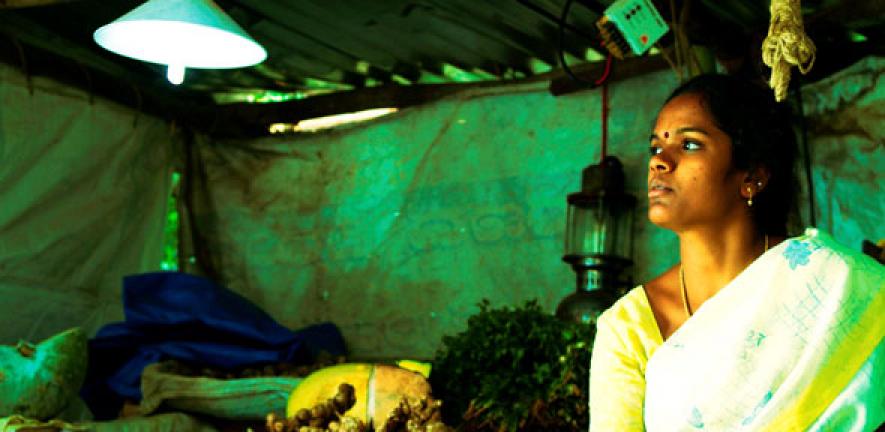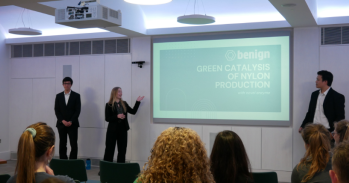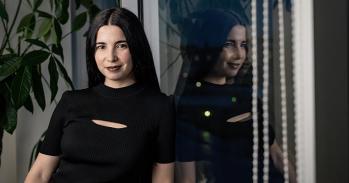
Co-author of recently published book 'Jugaad Innovation', Professor Jaideep Prabhu argues that a frugal and flexible approach to innovation can generate breakthrough growth not only in the developing world but also in the West.
Co-author of recently published book 'Jugaad Innovation', Professor Jaideep Prabhu argues that a frugal and flexible approach to innovation can generate breakthrough growth not only in the developing world but also in the West.
Jugaad innovators have a mindset that encapsulates several attitudes and practices, including the ability to seek opportunity in adversity, do more with less, think and act flexibly, keep things simple, include the margin, and follow the heart.
Professor Jaideep Prabhu
Innovation is a major imperative for companies and governments worldwide. But post-downturn we can’t solely rely on the tried-and-tested formula which has sustained innovation efforts in the West for decades: highly structured R&D processes that result in expensive top-down projects. Instead, how can we do more for less, while serving broader markets?
One solution is for the West to look to places like India, Brazil and China for a new, flexible approach to innovation – to the activities of individuals like Dr Mohan, a resourceful innovator in Chennai, India, who has created a highly frugal and effective solution to a major public health problem. Or Harish Hande from Bangalore, India, whose Solar Electric Light Company (SELCO) offers affordable, sustainable lighting solutions for those who live outside the electricity grid.
Despite their remarkable work, such individuals are not an exception. Emerging markets are teeming with frugal and flexible innovators like these. In the nearly four years that my co-authors and I have been researching the phenomenon of jugaad (a Hindi term that roughly translates as ‘overcoming harsh constraints by improvising an effective solution using limited resources’), we have encountered hundreds of entrepreneurs in resource-constrained circumstances worldwide who have innovated in areas as diverse as health care, education, financial services, energy and entertainment.
The self-expanding diabetes clinic
India has the dubious distinction of being the diabetes capital of the world. In many cases, rural patients don’t know what diabetes is, let alone that they may be suffering from it. Even when they do know, the lack of good rural health care means travelling to distant cities and taking time away from work to get the necessary medical attention. Given that 70% of India’s 1.2 billion people live in villages, this situation has all the makings of a public health disaster.
Enter Dr Mohan, Director of the Madras Diabetes Research Foundation and Chairman of Dr Mohan’s Diabetes Specialities Centre in Chennai, capital of the South Indian state of Tamil Nadu. Deeply concerned about the consequences of a looming public health crisis, and aware of India’s socioeconomic realities, Mohan engaged in a frugal and flexible piece of thinking: what if physicians could remotely consult patients without either group having to travel?
After much trial and error, he brought to life a mobile clinic, housed in a satellite-enabled van, which visits some of the remotest parts of Tamil Nadu and links urban doctors to rural patients and community health workers. The van has telemedicine technologies to conduct diagnostic tests and transmit them via satellite even from areas too remote for internet connectivity. From their offices in Chennai, Dr Mohan and colleagues can see and communicate remotely, in real time, with rural patients through video monitors, while tests such as retinal scans are transmitted within seconds for immediate evaluation.
To avoid straining the frugal business model, improvisations were made such as partnering with the Indian Space Research Organization to obtain free satellite communications for his telemedicine service, and recruiting young volunteers from small towns to run most of the operations in the mobile clinic. Already Dr Mohan and colleagues have screened more than 50,000 people across over 40 villages in Tamil Nadu and provided treatment to thousands of patients.
Here comes the sun
Providing lighting to rural homes in India is also a challenge. Over 40% of India’s population live outside the electricity grid and many have to rely on kerosene lamps for lighting. Kerosene is expensive and not always available, and produces a poor quality of light and unhealthy fumes.
Harish Hande saw this problem as a potential opportunity for jugaad innovation. In 1995, he founded SELCO to provide affordable solar energy to India’s rural poor. To do so, he had to rethink how he financed his business, priced his services, and distributed and maintained his solution.
He started with $30 seed money. Banks were hesitant to lend and venture capitalists deemed his unproven business model too risky to invest in. So Hande bootstrapped SELCO: he used the $30 to buy his first solar home lighting system, which he then sold. With the revenues, he purchased additional systems, which he also sold, and so on.
As Hande penetrated deeper into rural areas, he learned that his potential customers – many of whom earned $1 to $2 a day – could not afford the up-front costs of buying and installing his solar lighting systems, and there was no economical way to maintain them across multiple villages. His solution was to create a rural network of small-scale entrepreneurs who own and maintain the solar panels and batteries, and rent them out to consumers on a pay-per-use basis.
This business model made SELCO’s solution affordable and accessible to scores of rural customers, including corner-shops, small-scale farmers and women working from home. It also created an incentive for local entrepreneurs to distribute and maintain the equipment over time. Within a few years, 125,000 households have already taken up the solar lighting system.
A universal solution to universal challenges
The fruits of jugaad innovation include the $2000 Tata Nano car, $50 Aakash tablet PC, 1 cent/minute mobile phone calls, £500 electrocardiography (ECG) machines (and $1 ECG scans), $25 water purifier, $70 fridge that runs on batteries, and so on.
In the course of our research we learned that the entrepreneurial spirit of jugaad is not limited to India. It is widely practised in Argentina, Brazil, China, Costa Rica, India, Kenya, Mexico, the Philippines, and other emerging economies. Brazilians call it gambiarra; the Chinese, zizhu chuangxin; and the Kenyans, jua kali.
A resource-constrained and unpredictable environment makes frugal and flexible innovation necessary, even vital. Jugaad innovators have a mindset that encapsulates several attitudes and practices, including the ability to seek opportunity in adversity, do more with less, think and act flexibly, keep things simple, include the margin, and follow the heart. Specifically, jugaad entrepreneurs are resilient, frugal, adaptable, inclusive, empathetic and passionate. All these traits help them to compete and succeed in the complex world of emerging markets.
But the jugaad mindset, and the innovations that result from it, not only hold promise for the poor in emerging markets. Increasingly, such a frugal and flexible approach has relevance to Western economies that are reeling under the pressures of economic recession and budget constraints.
Unsurprisingly, we have found that many Western firms, faced with resource constraints of their own, and recognising the limits of the expensive, rigid and insular structured approach to innovation, have begun to apply jugaad and its principles within their organisations. For example, GE has applied jugaad to develop radically affordable ECG machines not only for India and China, but also for the USA and Europe; other firms applying jugaad include 3M, GM, PepsiCo, P&G and Renault-Nissan.
Yet, while jugaad offers an interesting and useful counterpoint to more structured approaches to innovation, it isn’t necessarily a substitute for the latter. Rather, jugaad can be an effective complement. For instance, as in the example of Dr Mohan, although his jugaad approach has been successful in delivering diabetes care in an affordable and effective way for some people, it has yet to achieve scale. Scaling the solution will probably require a more systematic application of resources around the basic model he has developed.
In summary, for firms and governments around the world struggling to deal with scarcity and complexity, our research suggests that jugaad and the emerging markets it comes from offer a solution not only in the developing world but also in the increasingly resource-constrained and complex West. Innovators like Dr Mohan and Harish Hande, and their relentless pursuit of frugal and flexible solutions, could be just the thing the world needs to grow without depleting the planet’s resources.
Jugaad Innovation: Think Frugal, Be Flexible, Generate Breakthrough Growth by Navi Radjou, Jaideep Prabhu and Simone Ahuja was published by Jossey-Bass in April 2012 (www.jugaadinnovation.com/)
Professor Prabhu is the Jawaharlal Nehru Professor of Indian Business & Enterprise and Director of the Centre for India & Global Business at Cambridge Judge Business School.
This work is licensed under a Creative Commons Licence. If you use this content on your site please link back to this page.





